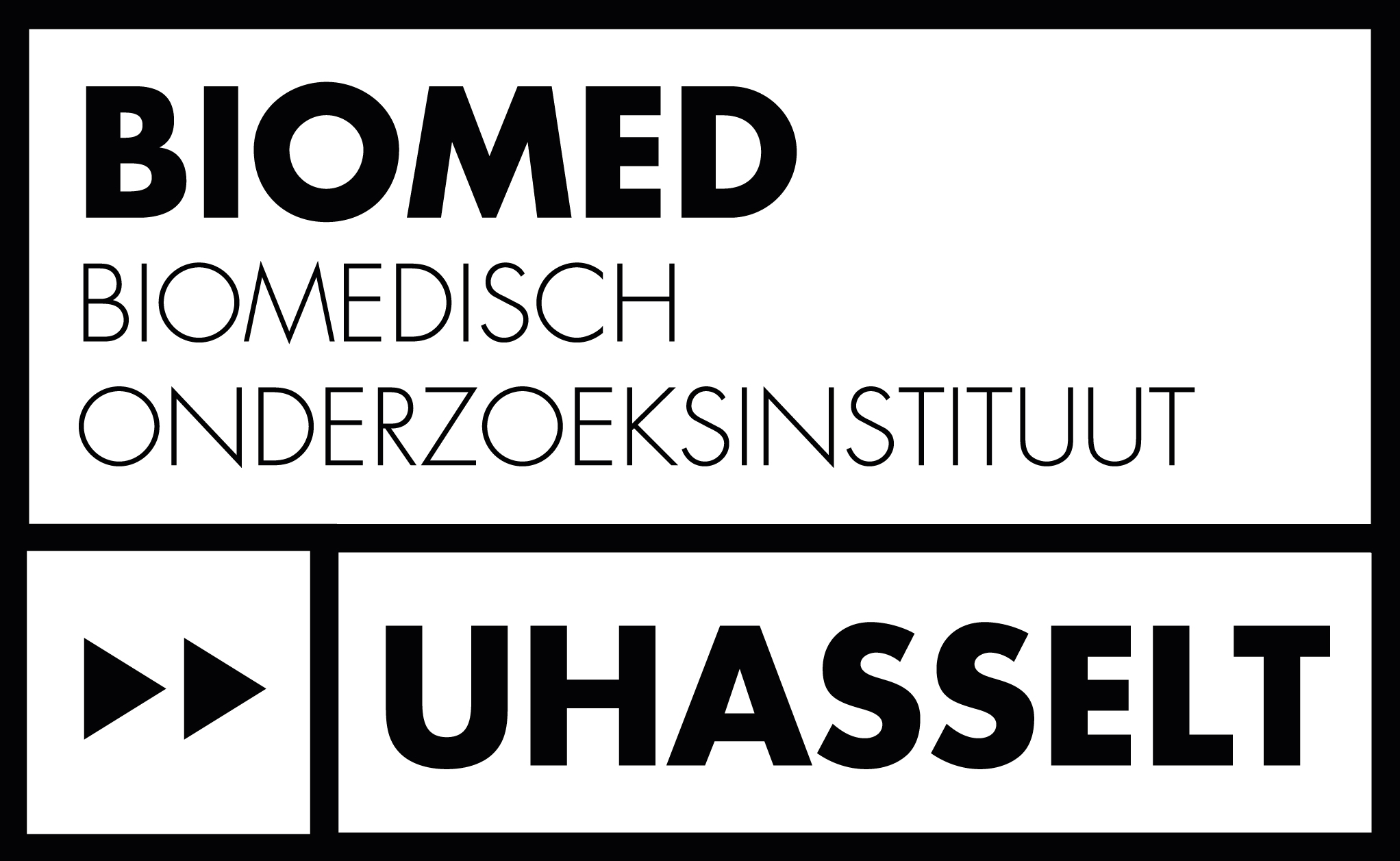PUBLICATIONS


Publications 2025
Empowering Health Care Actors to Contribute to the Implementation of Health Data Integration Platforms (Retrospective of the medEmotion Project)
Parciak M, Pierlet N, Peeters L
Empowering Health Care Actors to Contribute to the Implementation of Health Data Integration Platforms: Retrospective of the medEmotion Project
J Med Internet Res 2025;27:e68083
URL: https://www.jmir.org/2025/1/e68083
DOI: 10.2196/68083
Health data integration platforms are vital to drive collaborative, interdisciplinary medical research projects. Developing such a platform requires input from different stakeholders. Managing these stakeholders and steering platform development is challenging, and misaligning the platform to the partners’ strategies might lead to a low acceptance of the final platform. We present the medEmotion project, a collaborative effort among 7 partners from health care, academia, and industry to develop a health data integration platform for the region of Limburg in Belgium. We focus on the development process and stakeholder engagement, aiming to give practical advice for similar future efforts based on our reflections on medEmotion. We introduce Personas to paraphrase different roles that stakeholders take and Demonstrators that summarize personas’ requirements with respect to the platform. Both the personas and the demonstrators serve 2 purposes. First, they are used to define technical requirements for the medEmotion platform. Second, they represent a communication vehicle that simplifies discussions among all stakeholders. Based on the personas and demonstrators, we present the medEmotion platform based on components from the Microsoft Azure cloud. The demonstrators are based on real-world use cases and showcase the utility of the platform. We reflect on the development process of medEmotion and distill takeaway messages that will be helpful for future projects. Investing in community building, stakeholder engagement, and education is vital to building an ecosystem for a health data integration platform. Instead of academic-led projects, the health care providers themselves ideally drive collaboration among health care providers. The providers are best positioned to address hospital-specific requirements, while academics take a neutral mediator role. This also includes the ideation phase, where it is vital to ensure the involvement of all stakeholders. Finally, balancing innovation with implementation is key to developing an innovative yet sustainable health data integration platform.
Read here
LLM-Matcher: A Name-Based Schema Matching Tool using Large Language Models
Marcel Parciak, Brecht Vandevoort, Frank Neven, Liesbet M. Peeters, and Stijn Vansummeren. 2025. LLM-Matcher: A Name-Based Schema Matching Tool using Large Language Models. In Companion of the 2025 International Conference on Management of Data (SIGMOD/PODS '25). Association for Computing Machinery, New York, NY, USA, 203–206. https://doi.org/10.1145/3722212.3725112
We present LLM-Matcher, an interactive name-based schema matching system that utilizes large language models (LLMs) to identify correspondences between source and target schema elements relying solely on their names and descriptions. This tool is specifically designed for restricted environments where instance-based schema matching is not possible, such as the healthcare domain where instance access is often prohibited. LLM-Matcher is based on an extensive experimental study, showing the capabilities of LLMs in the schema matching task. Our system is specifically tailored towards users with sufficient domain knowledge and offers an interpretable initial mapping that can be further refined by providing textual feedback. This feedback allows to rectify model misconceptions as well as improve the quality of schema element descriptions. This paper provides a comprehensive overview of LLM-Matcher, explores its application in the healthcare domain, allows users to gain additional insight into our experimental study, and outlines different steps showcased in the demonstration.
Read here
Integrating big data and artificial intelligence to predict progression in multiple sclerosis: challenges and the path forward
Khan H, Aerts S, Vermeulen I, Woodruff HC, Lambin P, Peeters LM. Integrating big data and artificial intelligence to predict progression in multiple sclerosis: challenges and the path forward. J Neuroeng Rehabil. 2025 Sep 29;22(1):204. doi: 10.1186/s12984-025-01748-z. PMID: 41024088; PMCID: PMC12482038.
Multiple sclerosis (MS) remains a complex and costly neurological condition characterised by progressive disability, making early detection and accurate prognosis of disease progression imperative. While artificial intelligence (AI) combined with big data promises transformative advances in personalised MS care, integration of multimodal, real-world datasets, including clinical records, magnetic resonance imaging (MRI), and digital biomarkers, remains limited. This perspective paper identifies a critical gap between technical innovation and clinical implementation, driven by methodological constraints, evolving regulatory frameworks, and ethical concerns related to bias, privacy, and equity. We explore this gap through three interconnected lenses: the underuse of integrated real-world data, the barriers posed by regulation and ethics, and emerging solutions. Promising strategies such as federated learning, regulatory initiatives like DARWIN-EU and the European Health Data Space, and patient-led frameworks including PROMS and CLAIMS, offer structured pathways forward. Additionally, we highlight the growing relevance of foundation models for interpreting complex MS data and supporting clinical decision-making. We advocate for harmonised data infrastructures, patient-centred design, explainable AI, and real-world validation as core pillars for future implementation. By aligning technical, regulatory, and ethical domains, stakeholders can unlock the full potential of AI to enhance prognosis, personalise care, and improve outcomes for people with MS.
Read here
Radiomics Quality Score 2.0: towards radiomics readiness levels and clinical translation for personalized medicine
Lambin P, Woodruff HC, Mali SA, Zhong X, Kuang S, Lavrova E, Khan H, Lekadir K, Zwanenburg A, Deasy J, Bobowicz M, Marti-Bonmati L, Maidment A, Dumontier M, Kinahan PE, Nobel JM, Amirrajab S, Salahuddin Z. Radiomics Quality Score 2.0: towards radiomics readiness levels and clinical translation for personalized medicine. Nat Rev Clin Oncol. 2025 Nov;22(11):831-846. doi: 10.1038/s41571-025-01067-1. Epub 2025 Sep 3. PMID: 40903523.
Radiomics is a tool for medical imaging analysis that could have a relevant role in precision oncology by offering precise quantitative support for clinical decision-making. The Radiomics Quality Score (RQS) is a tool developed to assess the rigour of radiomics studies that has now been widely adopted by researchers. Although RQS version 1.0 established a benchmark, an updated framework is required to account for evolving knowledge and ensure optimal evaluation of the quality of radiomics studies through the inclusion of fairness, explainability, rigorous quality control and harmonization. In this Review, we introduce the updated RQS 2.0, which maintains the scientific rigour of its predecessor and addresses these contemporary needs, and therefore could potentially accelerate clinical translation. Moreover, we introduce the radiomics readiness levels, inspired by the technology readiness level framework, which are integrated in RQS 2.0 and reflect nine distinct levels of incremental improvement in radiomics research with the ultimate aim of clinical implementation. We also detail anticipated future directions in radiomics, outlining a strategic vision to advance precision oncology, which is the ultimate aim of RQS 2.0.
Read here
Personalized federated learning for predicting disability progression in multiple sclerosis using real-world routine clinical data
Pirmani A, De Brouwer E, Arany Á, Oldenhof M, Passemiers A, Faes A, Kalincik T, et al., Peeters LM, Moreau Y. Personalized federated learning for predicting disability progression in multiple sclerosis using real-world routine clinical data. NPJ Digit Med. 2025 Jul 24;8(1):478. doi: 10.1038/s41746-025-01788-8. PMID: 40707601; PMCID: PMC12289948.
Early prediction of disability progression in multiple sclerosis (MS) remains challenging despite its critical importance for therapeutic decision-making. We present the first systematic evaluation of personalized federated learning (PFL) for 2-year MS disability progression prediction, leveraging multi-center real-world data from over 26,000 patients. While conventional federated learning (FL) enables privacy-aware collaborative modeling, it remains vulnerable to institutional data heterogeneity. PFL overcomes this challenge by adapting shared models to local data distributions without compromising privacy. We evaluated two personalization strategies: a novel AdaptiveDualBranchNet architecture with selective parameter sharing, and personalized fine-tuning of global models, benchmarked against centralized and client-specific approaches. Baseline FL underperformed relative to personalized methods, whereas personalization significantly improved performance, with personalized FedProx and FedAVG achieving ROC-AUC scores of 0.8398 ± 0.0019 and 0.8384 ± 0.0014, respectively. These findings establish personalization as critical for scalable, privacy-aware clinical prediction models and highlight its potential to inform earlier intervention strategies in MS and beyond.
Read here
Leveraging hand-crafted radiomics on multicenter FLAIR MRI for predicting disability worsening in people with multiple sclerosis
Khan H, Woodruff HC, Giraldo DL, Werthen-Brabants L, Mali SA, Amirrajab S, De Brouwer E, Popescu V, Van Wijmeersch B, Gerlach O, Sijbers J, Peeters LM, Lambin P. Leveraging hand-crafted radiomics on multicenter FLAIR MRI for predicting disability worsening in people with multiple sclerosis. Front Neurosci. 2025 Oct 29;19:1610401. doi: 10.3389/fnins.2025.1610401. PMID: 41235171; PMCID: PMC12607017.
Background: Multiple sclerosis (MS) is an autoimmune disease of the central nervous system, leading to varying degrees of functional impairment. Conventional tools, such as the Expanded Disability Status Scale (EDSS), lack sensitivity to subtle disease worsening. Radiomics provides a quantitative imaging approach to address this limitation. This study applied machine learning (ML) and radiomics features from T2-weighted Fluid-Attenuated Inversion Recovery (FLAIR) magnetic resonance imaging (MRI) to predict disability worsening in MS.
Methods: A retrospective analysis was performed on real-world data from 247 PwMS across two centers. Disability worsening was defined as a change in EDSS over two years. FLAIR MRIs underwent preprocessing and super-resolution reconstruction to enhance low-resolution images. White matter lesions (WML) were segmented using the Lesion Segmentation Toolbox (LST), and tissue segmentation was performed using sequence Adaptive Multimodal Segmentation. Radiomics features from WML and normal-appearing white matter (NAWM) were extracted using Pyradiomics, harmonized with Longitudinal ComBat, followed by recursive feature elimination for feature selection. Elastic Net, Balanced Random Forest (BRFC), and Light Gradient-Boosting Machine (LGBM) models were trained and evaluated.
Results: The LGBM model with harmonized radiomics and clinical features outperformed the clinical-only model, achieving a test area under the precision-recall curve (PR AUC) of 0.20 and a receiver operating characteristic area under the curve (ROC AUC) of 0.64. Key predictive features, among others, included Gray-Level Co-Occurrence Matrix (GLCM) maximum probability (WML) and Gray-Level Dependence Matrix (GLDM) dependence non-uniformity (NAWM). However, short-term longitudinal changes showed limited predictive power (PR AUC = 0.11, ROC AUC = 0.69).
Conclusion: These findings highlight the potential of ML-driven radiomics in predicting disability worsening, warranting validation in larger, balanced datasets and exploration of advanced deep learning approaches.
Read here
Editorial: Use of big data and artificial intelligence in multiple sclerosis
Peeters LM, Faes A, Hartung HP. Editorial: Use of big data and artificial intelligence in multiple sclerosis. Front Immunol. 2025 Aug 20;16:1679482. doi: 10.3389/fimmu.2025.1679482. PMID: 40909267; PMCID: PMC12404931.
As health data volume and the sophistication of artificial intelligence (AI) tools grow,their potential to transform the management of complex neuroimmunological conditionslike multiple sclerosis (MS) has become increasingly evident. MS, a chronic immune-mediated inflammatory disorder of the central nervous system, presents a unique challenge in the health sector due to its multifactorial nature and variable progression patterns. Each patient’s journey is marked by distinct symptom trajectories and responses to treatment, demanding personalised approaches in diagnosis, prognosis, and therapeutic interventions.
This Special Topic aims to address the clinical complexity of MS by leveraging data driven insights and innovative health initiatives. The overarching goal is to present the current challenges in MS research and explore recent advances and future trends that can significantly impact patient care. Through a Research Topic of reviews, perspectives, and original research articles, we explore how advanced data techniques and innovative health initiatives are shaping the future of MS research and care
Read here
Applying Federated Learning to Block-Term Tensor Regression for Heart Disease Prediction
Axel Faes, Ashkan Pirmani, Yves Moreau, Liesbet M. Peeters
Block-Term Tensor Regression (BTTR) has proven to be a powerful tool for modeling complex, high-dimensional data by leveraging multilinear relationships, making it particularly well-suited for applications in healthcare and neuroscience. However, traditional implementations of BTTR rely on centralized datasets, which pose significant privacy risks and hinder collaboration across institutions. To address these challenges, we introduce Federated Block-Term Tensor Regression (FBTTR), an extension of BTTR designed for federated learning scenarios. FBTTR enables decentralized data analysis, allowing institutions to collaboratively build predictive models while preserving data privacy and complying with regulations.
FBTTR represents a major step forward in applying tensor regression to federated learning environments. Its performance is evaluated in two case studies: finger movement decoding from Electrocorticography (ECoG) signals and heart disease prediction. In the first case study, using the BCI Competition IV dataset, FBTTR outperforms non-multilinear models, demonstrating superior accuracy in decoding finger movements. For the dataset, for subject 3, the thumb obtained a performance of 0.76 +/- .05 compared to 0.71 +/- 0.05 for centralised BTTR. In the second case study, FBTTR is applied to predict heart disease using real-world clinical datasets, outperforming both standard federated learning approaches and centralized BTTR models. In the Fed-Heart-Disease Dataset, an AUC-ROC was obtained of 0.872 +/- 0.02 and an accuracy of 0.772 +/- 0.02 compared to 0.812 +/- 0.003 and 0.753 +/- 0.007 for the centralized model.
Publications 2024
The arisal of data spaces: why I am excited and worried
Peeters LM. The arisal of data spaces: why I am excited and worried. Front Immunol. 2024 Oct 22;15:1461361. doi: 10.3389/fimmu.2024.1461361. PMID: 39502694; PMCID: PMC11534855.
This paper explores the significant role of real-world data (RWD) in advancing our understanding and management of Multiple Sclerosis (MS). RWD has proven invaluable in MS research and care, offering insights from larger and diverse patient populations. A key focus of the paper is the European Health Data Space (EHDS), a significant development that promises to change how healthcare data is managed across Europe. This initiative is particularly relevant to the MS community. The paper highlights various data initiatives, discussing their importance for those affected by MS. Despite the potential benefits, there are challenges and concerns, especially about ensuring that the growth of various data platforms remains beneficial for MS patients. The paper suggests practical actions for the global MS community to consider, aimed at optimizing the use of RWD. The emphasis of this discussion is on the secondary use of health data, particularly in the European context. The content is based on the author's own experiences and interpretations, offering a personal yet informed view on using RWD to improve MS research and patient care.
Read here
Schema Matching with Large Language Models: an Experimental Study
Marcel Parciak, Brecht Vandevoort, Frank Neven, Liesbet M. Peeters, Stijn Vansummeren
Large Language Models (LLMs) have shown useful applications in a variety of tasks, including data wrangling. In this paper, we investigate the use of an off-the-shelf LLM for schema matching. Our objective is to identify semantic correspondences between elements of two relational schemas using only names and descriptions. Using a newly created benchmark from the health domain, we propose different so-called task scopes. These are methods for prompting the LLM to do schema matching, which vary in the amount of context information contained in the prompt. Using these task scopes we compare LLM-based schema matching against a string similarity baseline, investigating matching quality, verification effort, decisiveness, and complementarity of the approaches. We find that matching quality suffers from a lack of context information, but also from providing too much context information. In general, using newer LLM versions increases decisiveness. We identify task scopes that have acceptable verification effort and succeed in identifying a significant number of true semantic matches. Our study shows that LLMs have potential in bootstrapping the schema matching process and are able to assist data engineers in speeding up this task solely based on schema element names and descriptions without the need for data instances.
Read here
Measuring Approximate Functional Dependencies: A Comparative Study
Marcel Parciak, Sebastiaan Weytjens, Niel Hens, Frank Neven, Liesbet M. Peeters, Stijn Vansummeren
Approximate functional dependencies (AFDs) are functional dependencies (FDs) that "almost" hold in a relation. While various measures have been proposed to quantify the level to which an FD holds approximately, they are difficult to compare and it is unclear which measure is preferable when one needs to discover FDs in real-world data, i.e., data that only approximately satisfies the FD. In response, this paper formally and qualitatively compares AFD measures. We obtain a formal comparison through a novel presentation of measures in terms of Shannon and logical entropy. Qualitatively, we perform a sensitivity analysis w.r.t. structural properties of input relations and quantitatively study the effectiveness of AFD measures for ranking AFDs on real world data. Based on this analysis, we give clear recommendations for the AFD measures to use in practice.
Read here
Perceptual super-resolution in multiple sclerosis MRI
Giraldo DL, Khan H, Pineda G, Liang Z, Lozano-Castillo A, Van Wijmeersch B, Woodruff HC, Lambin P, Romero E, Peeters LM, Sijbers J. Perceptual super-resolution in multiple sclerosis MRI. Front Neurosci. 2024 Oct 22;18:1473132. doi: 10.3389/fnins.2024.1473132. PMID: 39502711; PMCID: PMC11534588.
Introduction: Magnetic resonance imaging (MRI) is crucial for diagnosing and monitoring of multiple sclerosis (MS) as it is used to assess lesions in the brain and spinal cord. However, in real-world clinical settings, MRI scans are often acquired with thick slices, limiting their utility for automated quantitative analyses. This work presents a single-image super-resolution (SR) reconstruction framework that leverages SR convolutional neural networks (CNN) to enhance the through-plane resolution of structural MRI in people with MS (PwMS).
Methods: Our strategy involves the supervised fine-tuning of CNN architectures, guided by a content loss function that promotes perceptual quality, as well as reconstruction accuracy, to recover high-level image features.
Results: Extensive evaluation with MRI data of PwMS shows that our SR strategy leads to more accurate MRI reconstructions than competing methods. Furthermore, it improves lesion segmentation on low-resolution MRI, approaching the performance achievable with high-resolution images.
Discussion: Results demonstrate the potential of our SR framework to facilitate the use of low-resolution retrospective MRI from real-world clinical settings to investigate quantitative image-based biomarkers of MS.
Read here
The coming decade of digital brain research: A vision for neuroscience at the intersection of technology and computing
Katrin Amunts, Markus Axer, Swati Banerjee, Lise Bitsch, Jan G. Bjaalie, et al.; The coming decade of digital brain research: A vision for neuroscience at the intersection of technology and computing. Imaging Neuroscience 2024; 2 imag–2–00137. doi: https://doi.org/10.1162/imag_a_00137
Abstract
In recent years, brain research has indisputably entered a new epoch, driven by substantial methodological advances and digitally enabled data integration and modelling at multiple scales—from molecules to the whole brain. Major advances are emerging at the intersection of neuroscience with technology and computing. This new science of the brain combines high-quality research, data integration across multiple scales, a new culture of multidisciplinary large-scale collaboration, and translation into applications. As pioneered in Europe’s Human Brain Project (HBP), a systematic approach will be essential for meeting the coming decade’s pressing medical and technological challenges. The aims of this paper are to: develop a concept for the coming decade of digital brain research, discuss this new concept with the research community at large, identify points of convergence, and derive therefrom scientific common goals; provide a scientific framework for the current and future development of EBRAINS, a research infrastructure resulting from the HBP’s work; inform and engage stakeholders, funding organisations and research institutions regarding future digital brain research; identify and address the transformational potential of comprehensive brain models for artificial intelligence, including machine learning and deep learning; outline a collaborative approach that integrates reflection, dialogues, and societal engagement on ethical and societal opportunities and challenges as part of future neuroscience research.
Read here
Core data set for real world data in multiple sclerosis: customization for latin america from a global task force recommendation
Rojas JI, Gracia F, Parciak T, Alonso R, Becker J, Treviño-Frenk I, Alonso-Serena M, Giunta D, Abad P, Carnero-Contentti E, Carrá A, Correa-Díaz EP, Correale J, Cristiano E, Flores J, Fruns M, Galleguillos L, Garcea O, Hamuy F, Lana-Peixoto M, Navas C, Pappais-Alvarenga R, Patrucco L, Rivera V, Tenembaum S, Ysrraelit MC, Peeters LM. Core data set para la generación de datos de la vida real en esclerosis múltiple: adaptación de una iniciativa global para América Latina [Core data set for real world data in multiple sclerosis: customization for latin america from a global task force recommendation]. Rev Neurol. 2024 Apr 1;78(7):185-197. Spanish. doi: 10.33588/rn.7807.2023326. PMID: 38502167; PMCID: PMC11407452.
Introduction: The primary objective of the core data set is to reduce heterogeneity and promote harmonization among data sources in EM, thereby reducing the time needed to execute real life data collection efforts. Recently, a group led by the Multiple Sclerosis Data Alliance has developed a core data set for collecting real-world data on multiple sclerosis (MS) globally. Our objective was to adapt this global data set to the needs of Latin America, so that it can be implemented by the registries already developed and in the process of development in the region.
Material and methods: A working group was formed regionally, the core data set created globally was adapted (translation process into Spanish, incorporation of regional variables and consensus on variables to be used). Consensus was obtained through the remote Delphi methodology of a round of questionnaires and remote discussion of the core data set variables.
Results: A total of 25 professionals from Latin America carried out the adaptation process between November 2022 and July 2023. Agreement was established on a core data set of nine categories and 45 variables, version 2023 to suggest its implementation in developed or developing registries, and MS cohorts in the region.
Conclusion: The core data set seeks to harmonize the variables collected by registries and cohorts in MS in Latin America in order to facilitate said collection and allow collaboration between sources. Its implementation will facilitate real life data collection and collaboration in the region.
Read here
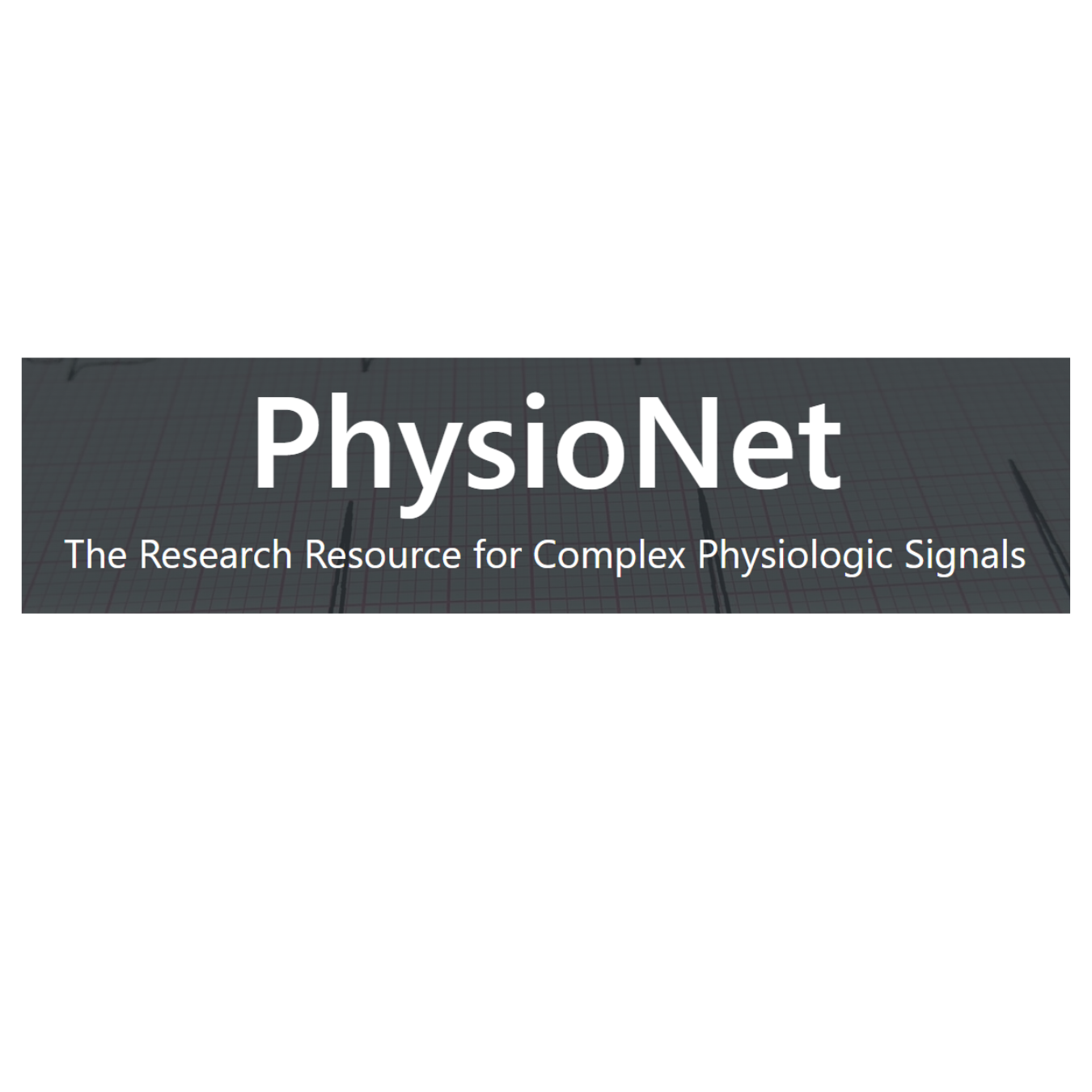
Patient-level dataset to study the effect of COVID-19 in people with Multiple Sclerosis
Khan, H., Geys, L., Baneke, p., Comi, G., & Peeters, L. (2024). Patient-level dataset to study the effect of COVID-19 in people with Multiple Sclerosis (version 1.0.0). PhysioNet. https://doi.org/10.13026/feem-fn23.
Abstract:
Multiple Sclerosis (MS) is an inflammatory autoimmune disease of the central nervous system, causing increased vulnerability to infections and disability among young adults. Ever since the coronavirus disease 2019 (COVID-19) outbreak, caused by severe acute respiratory syndrome coronavirus 2 infections, there have been concerns among people with MS (PwMS) about the potential interactions between various disease-modifying therapies and COVID-19. The COVID-19 in MS Global Data Sharing Initiative (GDSI) was initiated in 2020 to address these concerns. This paper focuses on the anonymisation and open-sourcing of a GDSI sub-dataset, comprising data entered by people with MS and clinicians using a fast data entry tool. The dataset includes demographics, comorbidities, hospital stay, and COVID-19 symptoms of PwMS. The dataset can be used to perform different statistical analyses to improve our understanding of COVID-19 in MS. Furthermore, this dataset can also be used within the context of educational activities to educate different stakeholders on the complex data science topics that were used within the GDSI.
Read HereThe global patient-reported outcomes for multiple sclerosis initiative: bridging the gap between clinical research and care - updates at the 2023 plenary event
Zaratin P, Samadzadeh S, Seferoğlu M, et al. The global patient-reported outcomes for multiple sclerosis initiative: bridging the gap between clinical research and care - updates at the 2023 plenary event. Front Neurol. 2024 Jun 20;15:1407257. doi: 10.3389/fneur.2024.1407257. PMID: 38974689; PMCID: PMC11225898.
Abstract
Significant advancements have been achieved in delineating the progress of the Global PROMS (PROMS) Initiative. The PROMS Initiative, a collaborative endeavor by the European Charcot Foundation and the Multiple Sclerosis International Federation, strives to amplify the influence of patient input on MS care and establish a cohesive perspective on Patient-Reported Outcomes (PROs) for diverse stakeholders. This initiative has established an expansive, participatory governance framework launching four dedicated working groups that have made substantive contributions to research, clinical management, eHealth, and healthcare system reform. The initiative prioritizes the global integration of patient (For the purposes of the Global PROMS Initiative, the term “patient” refers to the people with the disease (aka People with Multiple Sclerosis – pwMS): any individual with lived experience of the disease. People affected by the disease/Multiple Sclerosis: any individual or group that is affected by the disease: E.g., family members, caregivers will be also engaged as the other stakeholders in the initiative). insights into the management of MS care. It merges subjective PROs with objective clinical metrics, thereby addressing the complex variability of disease presentation and progression. Following the completion of its second phase, the initiative aims to help increasing the uptake of eHealth tools and passive PROs within research and clinical settings, affirming its unwavering dedication to the progressive refinement of MS care. Looking forward, the initiative is poised to continue enhancing global surveys, rethinking to the relevant statistical approaches in clinical trials, and cultivating a unified stance among ‘industry’, regulatory bodies and health policy making regarding the application of PROs in MS healthcare strategies.
Read here
Accessible Ecosystem for Clinical Research (Federated Learning for Everyone): Development and Usability Study
Pirmani A, Oldenhof M, Peeters L, De Brouwer E, Moreau Y
Accessible Ecosystem for Clinical Research (Federated Learning for Everyone): Development and Usability Study
JMIR Form Res 2024;8:e55496
URL: https://formative.jmir.org/2024/1/e55496
DOI: 10.2196/55496
Background: The integrity and reliability of clinical research outcomes rely heavily on access to vast amounts of data. However, the fragmented distribution of these data across multiple institutions, along with ethical and regulatory barriers, presents significant challenges to accessing relevant data. While federated learning offers a promising solution to leverage insights from fragmented data sets, its adoption faces hurdles due to implementation complexities, scalability issues, and inclusivity challenges.
Objective: This paper introduces Federated Learning for Everyone (FL4E), an accessible framework facilitating multistakeholder collaboration in clinical research. It focuses on simplifying federated learning through an innovative ecosystem-based approach.
Methods: The “degree of federation” is a fundamental concept of FL4E, allowing for flexible integration of federated and centralized learning models. This feature provides a customizable solution by enabling users to choose the level of data decentralization based on specific health care settings or project needs, making federated learning more adaptable and efficient. By using an ecosystem-based collaborative learning strategy, FL4E encourages a comprehensive platform for managing real-world data, enhancing collaboration and knowledge sharing among its stakeholders.
Results: Evaluating FL4E’s effectiveness using real-world health care data sets has highlighted its ecosystem-oriented and inclusive design. By applying hybrid models to 2 distinct analytical tasks—classification and survival analysis—within real-world settings, we have effectively measured the “degree of federation” across various contexts. These evaluations show that FL4E’s hybrid models not only match the performance of fully federated models but also avoid the substantial overhead usually linked with these models. Achieving this balance greatly enhances collaborative initiatives and broadens the scope of analytical possibilities within the ecosystem.
Conclusions: FL4E represents a significant step forward in collaborative clinical research by merging the benefits of centralized and federated learning. Its modular ecosystem-based design and the “degree of federation” feature make it an inclusive, customizable framework suitable for a wide array of clinical research scenarios, promising to revolutionize the field through improved collaboration and data use. Detailed implementation and analyses are available on the associated GitHub repository.
Read here
Machine-learning-based prediction of disability progression in multiple sclerosis: An observational, international, multi-center study
De Brouwer E, Becker T, Werthen-Brabants L, et al., Moreau Y, Peeters L. Machine-learning-based prediction of disability progression in multiple sclerosis: An observational, international, multi-center study. PLOS Digit Health. 2024 Jul 25;3(7):e0000533. doi: 10.1371/journal.pdig.0000533. PMID: 39052668; PMCID: PMC11271865.
Abstract
Background: Disability progression is a key milestone in the disease evolution of people with multiple sclerosis (PwMS). Prediction models of the probability of disability progression have not yet reached the level of trust needed to be adopted in the clinic. A common benchmark to assess model development in multiple sclerosis is also currently lacking.
Methods: Data of adult PwMS with a follow-up of at least three years from 146 MS centers, spread over 40 countries and collected by the MSBase consortium was used. With basic inclusion criteria for quality requirements, it represents a total of 15, 240 PwMS. External validation was performed and repeated five times to assess the significance of the results. Transparent Reporting for Individual Prognosis Or Diagnosis (TRIPOD) guidelines were followed. Confirmed disability progression after two years was predicted, with a confirmation window of six months. Only routinely collected variables were used such as the expanded disability status scale, treatment, relapse information, and MS course. To learn the probability of disability progression, state-of-the-art machine learning models were investigated. The discrimination performance of the models is evaluated with the area under the receiver operator curve (ROC-AUC) and under the precision recall curve (AUC-PR), and their calibration via the Brier score and the expected calibration error. All our preprocessing and model code are available at https://gitlab.com/edebrouwer/ms_benchmark, making this task an ideal benchmark for predicting disability progression in MS.
Findings: Machine learning models achieved a ROC-AUC of 0⋅71 ± 0⋅01, an AUC-PR of 0⋅26 ± 0⋅02, a Brier score of 0⋅1 ± 0⋅01 and an expected calibration error of 0⋅07 ± 0⋅04. The history of disability progression was identified as being more predictive for future disability progression than the treatment or relapses history.
Conclusions: Good discrimination and calibration performance on an external validation set is achieved, using only routinely collected variables. This suggests machine-learning models can reliably inform clinicians about the future occurrence of progression and are mature for a clinical impact study.
Read here
Unlocking the Power of Real-World Data: A Framework for Sustainable Healthcare
Pirmani A, Moreau Y, Peeters LM. Unlocking the Power of Real-World Data: A Framework for Sustainable Healthcare. Stud Health Technol Inform. 2024 Aug 22;316:1582-1583. doi:10.3233/SHTI240723. PMID: 39176510.
Abstract
Real-world data (RWD) has the potential to revolutionize healthcare by offering valuable insights into patient outcomes and treatment efficacy. However, leveraging RWD effectively presents challenges, including its inherent limitations, diverse stakeholders, and insufficient data management pipelines. A proposed framework advocates three essential elements: adherence to FAIR principles (Findable, Accessible, Interoperable, and Reusable), stakeholder engagement and education, and highlighting the need for inclusive, pragmatic federated hybrid pipelines. By employing these strategies, healthcare organizations can overcome obstacles to RWD utilization and foster sustainable progress in patient care.
Read here

Strategic Oversight Across Real-World Health Data Initiatives in a Complex Health Data Space: A call for collective responsibility
Geys, L. and Peeters, L. Strategic Oversight Across Real-World Health Data Initiatives in a Complex Health Data Space: A Call for Collective Responsibility. In Proceedings of the 17th International Joint Conference on Biomedical Engineering Systems and Technologies (BIOSTEC 2024) https://doi.org/10.5281/zenodo.10451144
List of initiatives curated by the authors of the paper: Strategic Oversight Across Real-World Health Data Initiatives in a Complex Health Data Space: A call for collective responsibility. In the context of this work, the term 'initiative' refers to plans, projects, or studies focused on unlocking real-world health data, making it accessible for research, innovation, and policy purposes. For each initiative, details about the covered regions, associated countries, website links, and whether the initiative is specific to healthcare or encompasses multiple domains are presented, as available. Important Disclaimer: The authors acknowledge that this list is neither exhaustive nor free from bias, influenced by their geographical location and their research emphasis on chronic disorders. However, this list offers a starting point to address the issues discussed in this position paper, aiming to provide readers with insights gained after extensive online exploration. The list resulting from our work can assist individuals seeking clarity on the evolving landscape of health data initiatives. While a comprehensive overview remains elusive, this list serves as a valuable resource to navigate the intricate ecosystem.
The paper is accepted (on 22 December 2023) as short paper for the the 17th International Joint Conference on Biomedical Engineering Systems and Technologies (HEALTHINF 2024).
Publication: the paper will be included in the Conference Proceedings, which will be published under an ISBN number by SCITEPRESS, on paper and digital support, and made available for online consultation at the SCITEPRESS Digital Library. Online publication is exclusive to papers which have been both published and presented at the event.
Publications 2023

Introducing a core dataset for real-world data in multiple sclerosis - recommendations from a global task force
Parciak T, Geys L, Helme A, van der Mei I, Hillert J, Schmidt H, et al. Introducing a core dataset for real-world data in multiple sclerosis registries and cohorts: Recommendations from a global task force. Mult Scler. 2023:13524585231216004.
Abstract:

Measuring Approximate Functional Dependencies: a Comparative Study
Parciak, M., Weytjens, S., Hens, N., Neven, F., Peeters, L. M., & Vansummeren, S. (2023). Measuring Approximate Functional Dependencies: a Comparative Study. arXiv (Cornell University). https://doi.org/10.48550/arxiv.2312.06296
Abstract:
Approximate functional dependencies (AFDs) are functional dependencies (FDs) that "almost" hold in a relation. While various measures have been proposed to quantify the level to which an FD holds approximately, they are difficult to compare and it is unclear which measure is preferable when one needs to discover FDs in real-world data, i.e., data that only approximately satisfies the FD. In response, this paper formally and qualitatively compares AFD measures. We obtain a formal comparison through a novel presentation of measures in terms of Shannon and logical entropy. Qualitatively, we perform a sensitivity analysis w.r.t. structural properties of input relations and quantitatively study the effectiveness of AFD measures for ranking AFDs on real world data. Based on this analysis, we give clear recommendations for the AFD measures to use in practice.
Read here
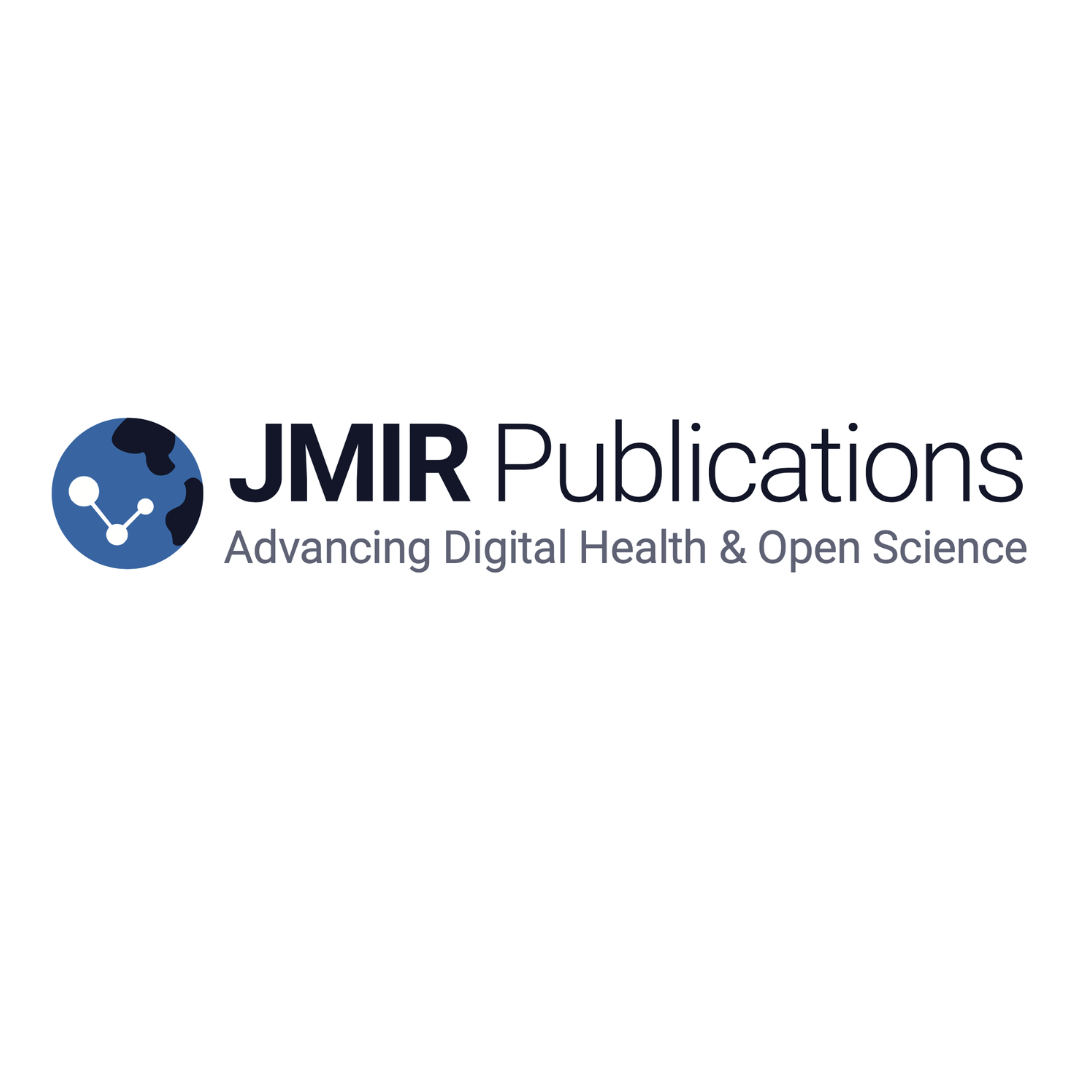
The journey of data within a Global Data Sharing Initiative: A federated three-layer data analysis pipeline to scale up multiple sclerosis research
Pirmani A, De Brouwer E, Geys L, Parciak T, Moreau Y, Peeters LM The Journey of Data Within a Global Data Sharing Initiative: A Federated 3-Layer Data Analysis Pipeline to Scale Up Multiple Sclerosis Research JMIR Med Inform 2023;11:e48030 doi: 10.2196/48030
Abstract:
Background: Investigating low-prevalence diseases such as multiple sclerosis is challenging because of the rather small number of individuals affected by this disease and the scattering of real-world data across numerous data sources. These obstacles impair data integration, standardization, and analysis, which negatively impact the generation of significant meaningful clinical evidence.
Objective:This study aims to present a comprehensive, research question-agnostic, multistakeholder-driven end-to-end data analysis pipeline that accommodates 3 prevalent data-sharing streams: individual data sharing, core data set sharing, and federated model sharing.
Methods:A demand-driven methodology is employed for standardization, followed by 3 streams of data acquisition, a data quality enhancement process, a data integration procedure, and a concluding analysis stage to fulfill real-world data-sharing requirements. This pipeline's effectiveness was demonstrated through its successful implementation in the COVID-19 and multiple sclerosis global data sharing initiative.
Results:The global data sharing initiative yielded multiple scientific publications and provided extensive worldwide guidance for the community with multiple sclerosis. The pipeline facilitated gathering pertinent data from various sources, accommodating distinct sharing streams and assimilating them into a unified data set for subsequent statistical analysis or secure data examination. This pipeline contributed to the assembly of the largest data set of people with multiple sclerosis infected with COVID-19.
Conclusions: The proposed data analysis pipeline exemplifies the potential of global stakeholder collaboration and underlines the significance of evidence-based decision-making. It serves as a paradigm for how data sharing initiatives can propel advancements in health care, emphasizing its adaptability and capacity to address diverse research inquiries.
Keywords:brain; data analysis; data analysis pipeline; data science; data sharing; end-to-end pipeline; evidence-based decision-making; federated; federated model sharing; low prevalence; multiple sclerosis; neurology; neuroscience; pipeline; rare; real-world data; spinal nervous system; spine.
©Ashkan Pirmani, Edward De Brouwer, Lotte Geys, Tina Parciak, Yves Moreau, Liesbet M Peeters. Originally published in JMIR Medical Informatics (https://medinform.jmir.org), 09.11.2023.
Read Here

FAIRness through automation: development of an automated medical data integration infrastructure for FAIR health data in a maximum care university hospital
Parciak M, Suhr M, Schmidt C, Bönisch C, Löhnhardt B, Kesztyüs D, et al. FAIRness through automation: development of an automated medical data integration infrastructure for FAIR health data in a maximum care university hospital. BMC Med Inform Decis Mak. 2023;23(1):94.
Abstract:
Background: Secondary use of routine medical data is key to large-scale clinical and health services research. In a maximum care hospital, the volume of data generated exceeds the limits of big data on a daily basis. This so-called “real world data” are essential to complement knowledge and results from clinical trials. Furthermore, big data may help in establishing precision medicine. However, manual data extraction and annotation workflows to transfer routine data into research data would be complex and inefficient. Generally, best practices for managing research data focus on data output rather than the entire data journey from primary sources to analysis. To eventually make routinely collected data usable and available for research, many hurdles have to be overcome. In this work, we present the implementation of an automated framework for timely processing of clinical care data including free texts and genetic data (non-structured data) and centralized storage as Findable, Accessible, Interoperable, Reusable (FAIR) research data in a maximum care university hospital.
Methods: We identify data processing workflows necessary to operate a medical research data service unit in a maximum care hospital. We decompose structurally equal tasks into elementary sub-processes and propose a framework for general data processing. We base our processes on open-source software-components and, where necessary, custom-built generic tools.
Results: We demonstrate the application of our proposed framework in practice by describing its use in our Medical Data Integration Center (MeDIC). Our microservices-based and fully open-source data processing automation framework incorporates a complete recording of data management and manipulation activities. The prototype implementation also includes a metadata schema for data provenance and a process validation concept. All requirements of a MeDIC are orchestrated within the proposed framework: Data input from many heterogeneous sources, pseudonymization and harmonization, integration in a data warehouse and finally possibilities for extraction or aggregation of data for research purposes according to data protection requirements.
Conclusion:Though the framework is not a panacea for bringing routine-based research data into compliance with FAIR principles, it provides a much-needed possibility to process data in a fully automated, traceable, and reproducible manner.
Read Here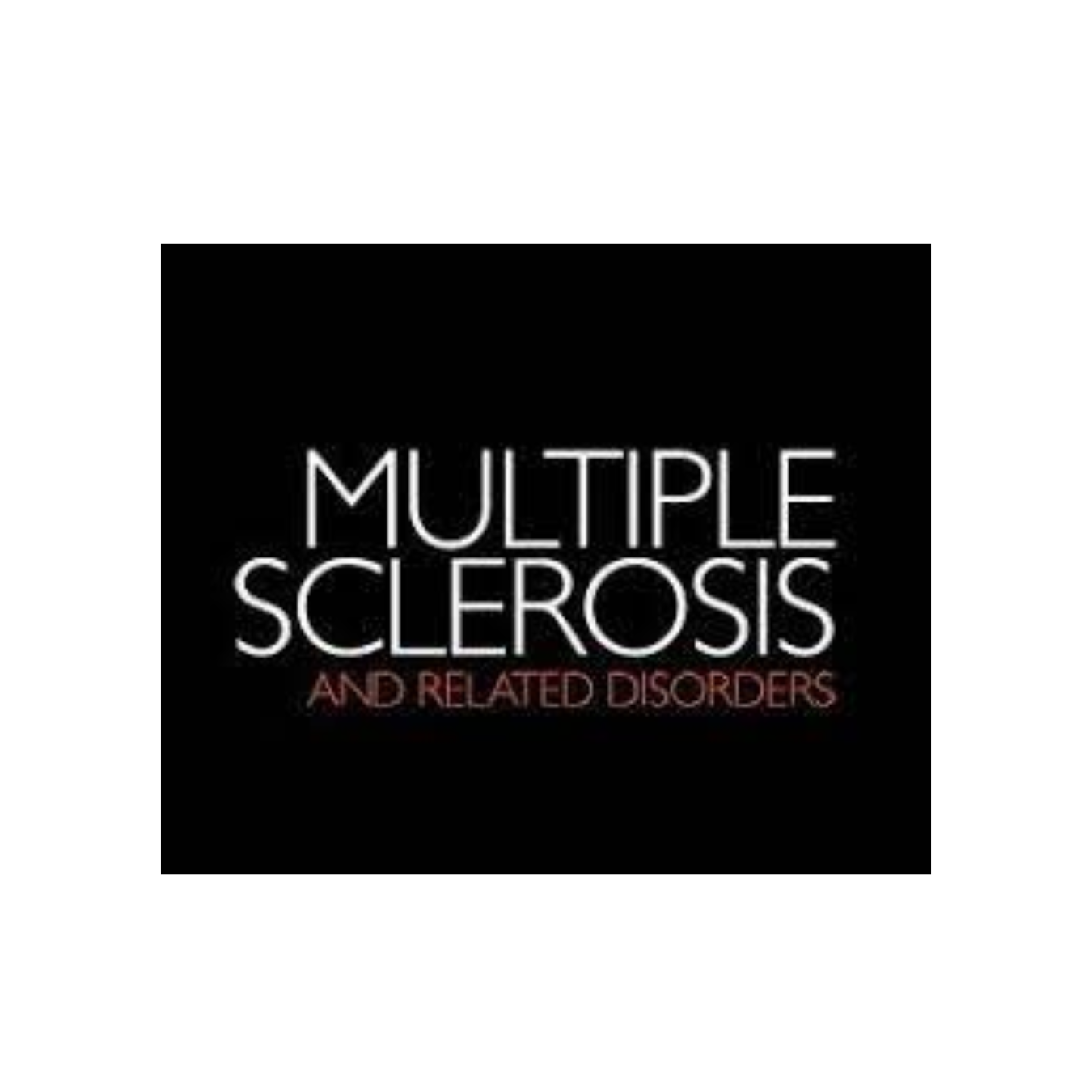
Safety and effectiveness of cladribine tablets for multiple sclerosis: Results from a single-center real-world cohort
Aerts S, Khan H, Severijns D, Popescu V, Peeters LM, Van Wijmeersch B. Safety and effectiveness of cladribine tablets for multiple sclerosis: Results from a single-center real-world cohort. Mult Scler Relat Disord. 2023;75:104735.
Abstract:
Background:Cladribine tablets are a highly effective immune reconstitution therapy licensed for treating relapsing multiple sclerosis (RMS) in Europe since 2017. Currently, there is a high demand for real-world data from different clinical settings on the effectiveness and safety profile of cladribine in MS.
Methods:Within this report, we retrospectively evaluated the outcomes of RMS patients who received cladribine between August 2018 and November 2021 at our Belgian institute. Patients with data for three effectiveness endpoints, more specifically, relapses, MRI observations, and confirmed disability worsening were incorporated into the analysis of 'no evidence of disease activity' (NEDA-3) re-baselined at 3 months. Safety endpoints included lymphopenia, liver transaminases, and adverse events (AEs) during follow-up. Descriptive statistics and time-to-event analysis were performed, including subgroup analysis by pre-treatment.
Results:Of the 84 RMS patients included in this study (age 42 [33-50], 64.3% female, diagnosis duration 6 [2-11] years, baseline EDSS 2.5 [1.5-3.6]), 14 (16.7%) patients experienced relapses, while disability progression and brain MRI activity occurred in 8.5% (6/71) and 6.3% (5/79). This resulted in 72.6% (n = 69, standard error 6%) retaining NEDA-3 status at the mean follow-up time of 22.6 ± 11.5 months. During the first year after cladribine initiation, disease activity prevailed more in patients with ≥2 prior DMTs and those switching from fingolimod, although both trends were not statistically significant. In terms of safety, 67.9% reported at least one AE during follow-up, the most frequent being fatigue (64.9%) and skin-related problems (38.6%).
Conclusion: Overall, our research results confirm cladribine's safety and effectiveness among RMS patients in real-world conditions. After the re-baseline, we observed high rates of NEDA-3-retention, and no new safety signals were noted.
Read HerePublications 2020-2022

Updated results of the COVID-19 in MS Global Data Sharing Initiative: anti-CD20 and other risk factors associated with COVID-19 severity
Simpson-Yap S, Pirmani A, Kalincik T, De Brouwer E, Geys L, Parciak T, et al. Updated Results of the COVID-19 in MS Global Data Sharing Initiative: Anti-CD20 and Other Risk Factors Associated With COVID-19 Severity. Neurol Neuroimmunol Neuroinflamm. 2022;9(6).
Abstract:
Background and Objectives: Certain demographic and clinical characteristics, including the use of some disease-modifying therapies (DMTs), are associated with severe acute respiratory syndrome coronavirus 2 infection severity in people with multiple sclerosis (MS). Comprehensive exploration of these relationships in large international samples is needed.
Methods: Clinician-reported demographic/clinical data from 27 countries were aggregated into a data set of 5,648 patients with suspected/confirmed coronavirus disease 2019 (COVID-19). COVID-19 severity outcomes (hospitalization, admission to intensive care unit [ICU], requiring artificial ventilation, and death) were assessed using multilevel mixed-effects ordered probit and logistic regression, adjusted for age, sex, disability, and MS phenotype. DMTs were individually compared with glatiramer acetate, and anti-CD20 DMTs with pooled other DMTs and with natalizumab.
Results: Of 5,648 patients, 922 (16.6%) with suspected and 4,646 (83.4%) with confirmed COVID-19 were included. Male sex, older age, progressive MS, and higher disability were associated with more severe COVID-19. Compared with glatiramer acetate, ocrelizumab and rituximab were associated with higher probabilities of hospitalization (4% [95% CI 1–7] and 7% [95% CI 4–11]), ICU/artificial ventilation (2% [95% CI 0–4] and 4% [95% CI 2–6]), and death (1% [95% CI 0–2] and 2% [95% CI 1–4]) (predicted marginal effects). Untreated patients had 5% (95% CI 2–8), 3% (95% CI 1–5), and 1% (95% CI 0–3) higher probabilities of the 3 respective levels of COVID-19 severity than glatiramer acetate. Compared with pooled other DMTs and with natalizumab, the associations of ocrelizumab and rituximab with COVID-19 severity were also more pronounced. All associations persisted/enhanced on restriction to confirmed COVID-19.
Discussion: Analyzing the largest international real-world data set of people with MS with suspected/confirmed COVID-19 confirms that the use of anti-CD20 medication (both ocrelizumab and rituximab), as well as male sex, older age, progressive MS, and higher disability are associated with more severe course of COVID-19.
Read Here
Severity of COVID19 infection among patients with multiple sclerosis treated with interferon-β
Simpson-Yap S, Pirmani A, De Brouwer E, Peeters LM, Geys L, Parciak T, et al. Severity of COVID19 infection among patients with multiple sclerosis treated with interferon-β. Mult Scler Relat Disord. 2022;66:104072.
Abstract:
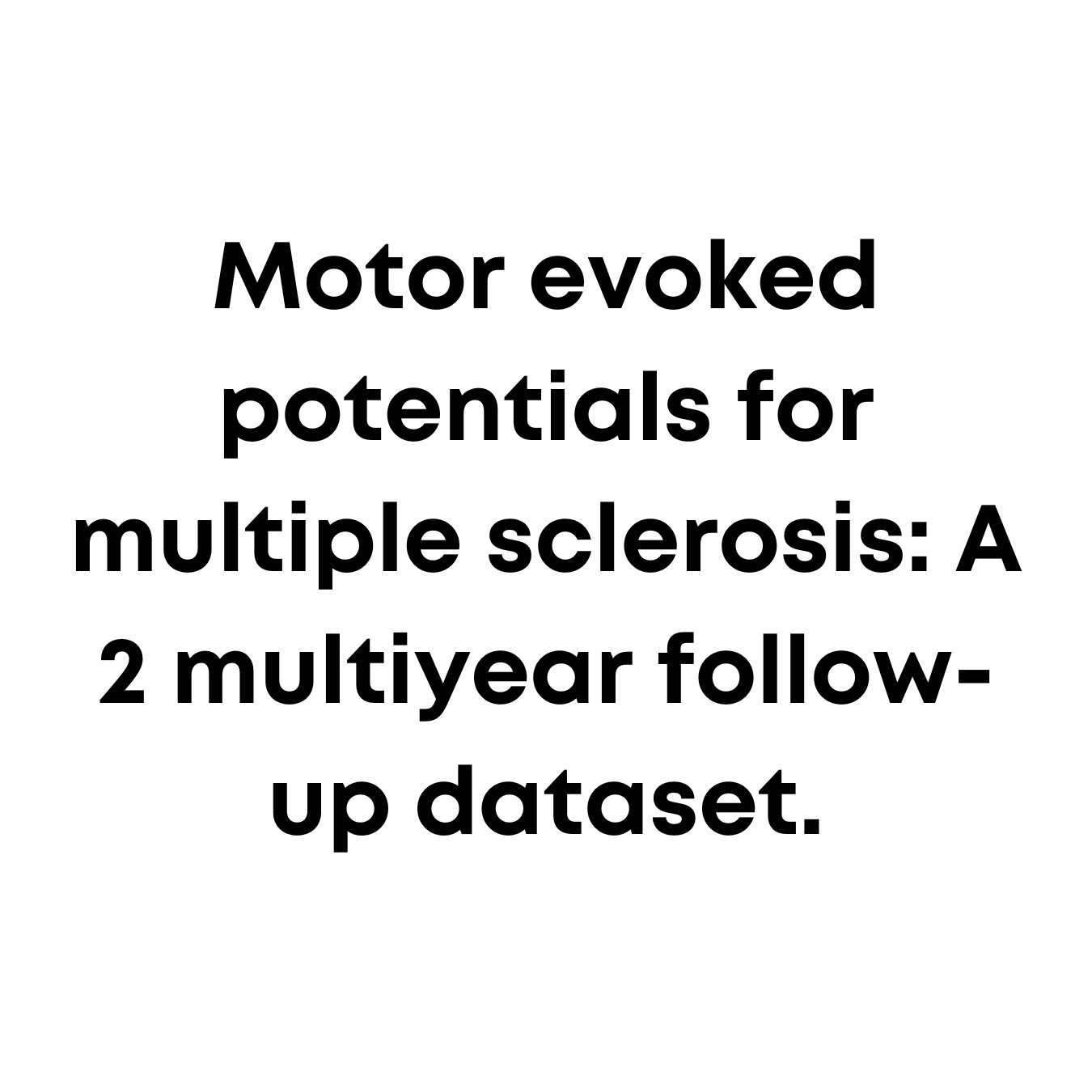
Motor evoked potentials for multiple sclerosis: A 2 multiyear follow-up dataset.
Yperman, J., Popescu, V., Van Wijmeersch, B. et al. Motor evoked potentials for multiple sclerosis, a multiyear follow-up dataset. Sci Data 9, 207 (2022). https://doi.org/10.1038/s41597-022-01335-0
Abstract:
Multiple sclerosis (MS) is a chronic disease affecting millions of people worldwide. The signal conduction through the central nervous system of MS patients deteriorates. Evoked potential measurements allow clinicians to monitor the degree of deterioration and are used for decision support. We share a dataset that contains motor evoked potential (MEP) measurements, in which the brain is stimulated and the resulting signal is measured by electrodes in the hands and feet. This results in time series of 100 milliseconds long. Typically, both hands and feet are measured in one hospital visit. The dataset consists of 5586 visits of 963 patients, performed in day-to-day clinical care over a period of 6 years. The dataset consists of approximately 100,000 MEP. Clinical metadata such as the expanded disability status scale, sex, and age is also available.
This dataset can be used to explore the role of evoked potentials in MS research and patient care. It may also be used as a real-world benchmark for machine learning techniques for time series analysis and predictive modelling.
Read Here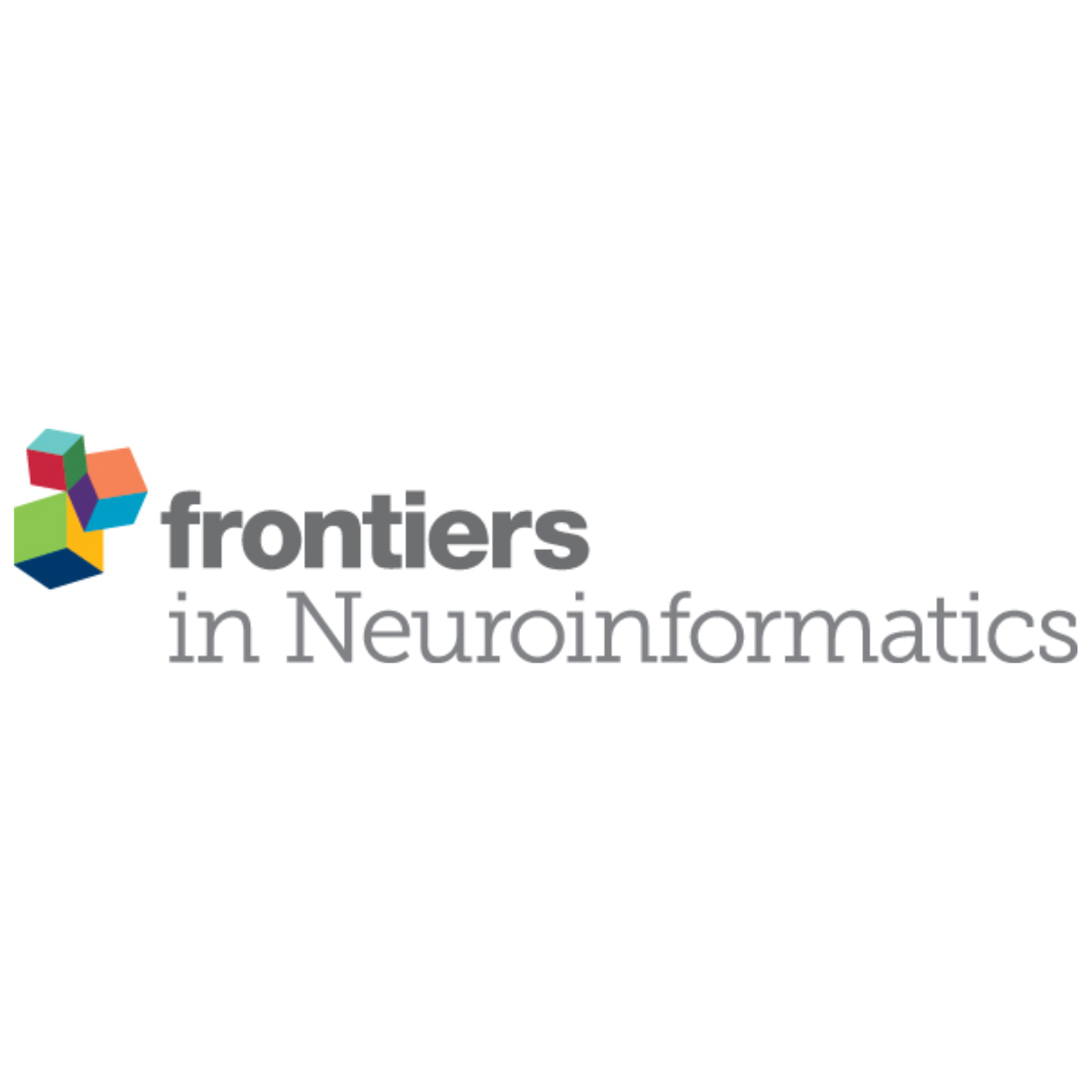
A national representative, cross-sectional study by the Hellenic Academy of Neuroimmunology (HEL.A.NI.) on COVID-19 and Multiple Sclerosis: overall impact and willingness towards vaccination
Boziki M, Styliadis C, Bakirtzis C, Grigoriadou E, Sintila AS, Nikolaidis I, et al. A National Representative, Cross-Sectional Study by the Hellenic Academy of NeuroImmunology (HEL.A.NI.) on COVID-19 and Multiple Sclerosis: Overall Impact and Willingness Toward Vaccination. Front Neurol. 2021;12:757038.
Abstract:
Background: In the context of the coronavirus disease 2019 (COVID-19) pandemic, the constant needs of people with multiple sclerosis (PwMS) and their caregivers were urgently highlighted.
Aim: The present study aims to capture the effects of the COVID-19 pandemic in several aspects of the quality of life of PwMS, in perception and behavior to COVID-19 and multiple sclerosis (MS), as well as concerning healthcare, working conditions, and the willingness toward COVID-19 vaccination.
Methods: This study is an initiative of the Hellenic Academy of Neuroimmunology (HEL.A.NI.) and it has been included in the MS Data Alliance (MSDA) Catalog, which can be accessed after creating an account on https://msda.emif-catalogue.eu/login. Two online questionnaires were administered: (i) impact of the COVID-19 pandemic on the quality of life, behavior, and healthcare of PwMS (Questionnaire A) and (ii) vaccination against COVID-19 (Questionnaire B). People with MS were invited to participate by the Hellenic Federation of Persons with Multiple Sclerosis (HFoPwMS).
Results: Three-hundred-ninety PwMS responded to Questionnaire A, whereas 176 PwMS provided answers for Questionnaire B. Older age, longer disease duration, and higher MS-related disability were associated with the increased perceived sensitivity toward severe acute respiratory syndrome coronavirus 2 (SARS-CoV-2) infection, as well as the increased perceived severity of COVID-19 upon potential infection. A significant proportion of PwMS experienced restricted access to MS-related health professionals, disease-modifying therapy (DMT) prescription, and/or to MS-related laboratory examination due to the pandemic. Subgroups of PwMS reported exacerbated symptoms (i.e., chronic MS-related symptoms, fatigue and/or worsening of pre-existing fatigue, and sexual dysfunction and or/worsening of pre-existing sexual dysfunction). Overall, the majority of the participants reported either a strong willingness to get vaccinated against COVID-19 or a likeliness to undergo vaccination. Being aware of the HEL.A.NI. recommendations regarding COVID-19 vaccination for PwMS were reported to increase the willingness of the participants to receive the vaccine.
Conclusions: Our results highlight the necessity of scientific and patient organizations in taking joint action to increase awareness on health-related issues during the pandemic and to provide accurate and up-to-date guidance for PwMS. Online information and communications technology (ICT) tools for polling public belief and behavior may prove valuable as means of retaining active routes of communication between stakeholders.
Read Here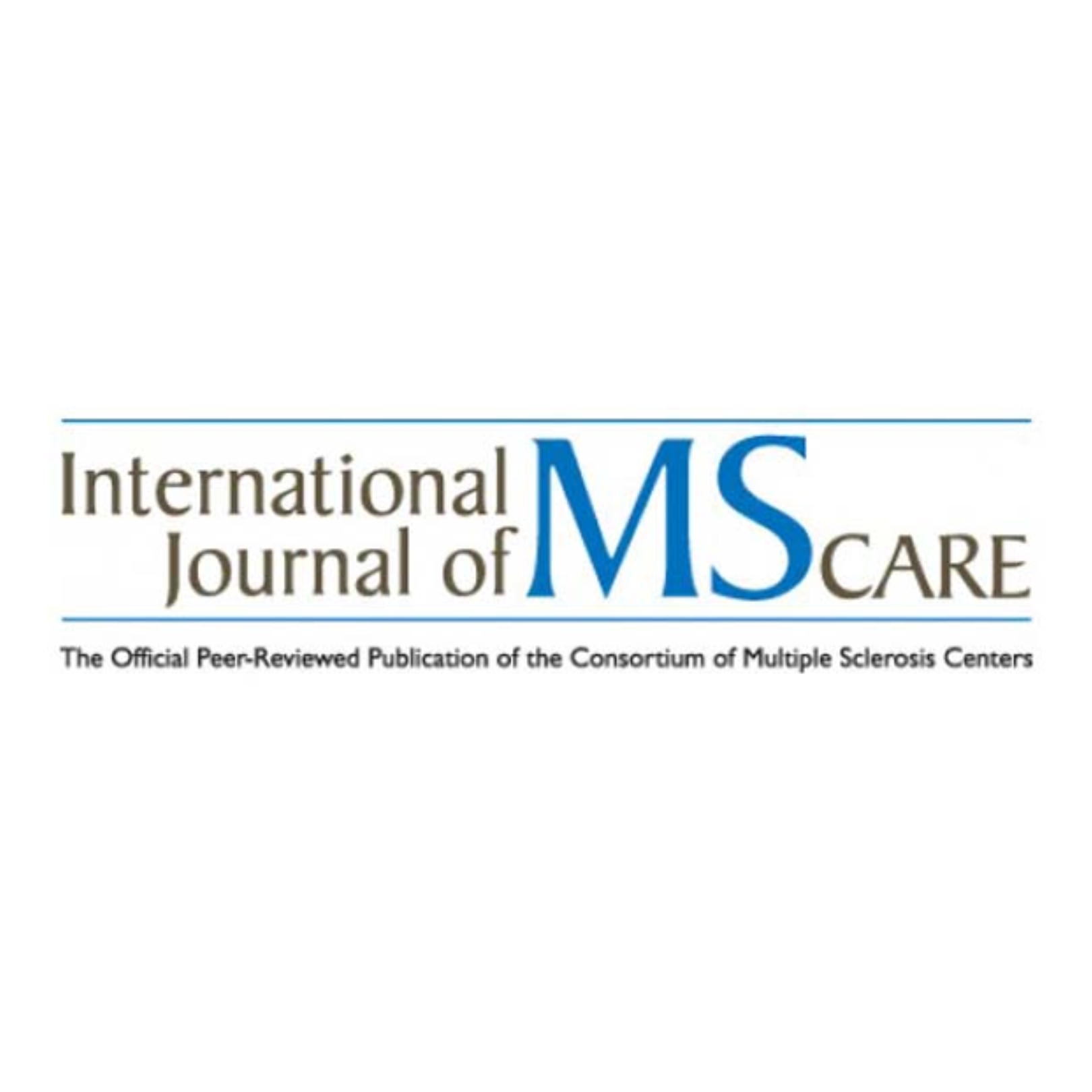
The MSDA Catalogue: enabling web-based discovery of metadata from real-world multiple sclerosis data sources
Geys L, Parciak T, Pirmani A, et al. The Multiple Sclerosis Data Alliance Catalogue: Enabling Web-Based Discovery of Metadata from Real-World Multiple Sclerosis Data Sources. Dec 29 2021; doi:10.7224/1537-2073.2021-006

Changes on the Health Care of People with Multiple Sclerosis from Latin America during the COVID-19 Pandemic
Chertcoff A, Bauer J, Silva, BA, et al. Changes on the health care of people with multiple sclerosis from Latin America during the COVID-19 pandemic. Mult Scler Relat Disord. Sept 2021;54. https://doi.org/10.1016/j.msard.2021.103120
Abstract:
Background:The COVID-19 pandemic has resulted in uncertain access to medical treatment for people with multiple sclerosis (pwMS) all over the world. However, there is no data regarding its impact on access to health care of pwMS from Latin America.
Objectives:We investigated and described changes in health care delivery for pwMS from Latin America during the COVID-19 pandemic.
Methods:PwMS from 18 patient organizations of the region completed a web-based survey hosted from May to October 2020.
Results:A total of 602 pwMS completed the questionnaire. Changes in disease-modifying therapies (DMTs) use: 6.7% of pwMS on continuous DMTs claimed to stopped them; 14.1% of those on infusion therapies declared to postpone their dosing; 68.8% declared delaying the initiation of a DMT. Disruptions in accessing rehabilitation services were reported by 65.7%. Changes in laboratory and MRI monitoring were reported by 30% and 33%, respectively. In a multivariable-adjusted logistic regression model, changes in laboratory monitoring were significantly associated with increased odds of postponing MRI monitoring (OR 4.09 CI95% 2.79–6.00, p < 0.001).
Conclusions:The COVID-19 pandemic has disrupted all aspects of the routine care for pwMS from Latin America. Consequences are yet to be determined.
Read Here
Longitudinal machine learning modeling of MS patient trajectories improves predictions of disability progression
De Brouwer E, Becker T, Moreau Y, et al. Longitudinal machine learning modeling of MS patient trajectories improves predictions of disability progression. Comput Methods Programs Biomed. May 2021;208:106180. doi:10.1016/j.cmpb.2021.106180
Abstract:
Background and Objectives:Research in Multiple Sclerosis (MS) has recently focused on extracting knowledge from real-world clinical data sources. This type of data is more abundant than data produced during clinical trials and potentially more informative about real-world clinical practice. However, this comes at the cost of less curated and controlled data sets. In this work we aim to predict disability progression by optimally extracting information from longitudinal patient data in the real-world setting, with a special focus on the sporadic sampling problem.
Methods: We use machine learning methods suited for patient trajectories modeling, such as recurrent neural networks and tensor factorization. A subset of 6682 patients from the MSBase registry is used.
Results: We can predict disability progression of patients in a two-year horizon with an ROC-AUC of 0.85, which represents a 32% decrease in the ranking pair error (1-AUC) compared to reference methods using static clinical features.
Conclusions:Compared to the models available in the literature, this work uses the most complete patient history for MS disease progression prediction and represents a step forward towards AI-assisted precision medicine in MS.
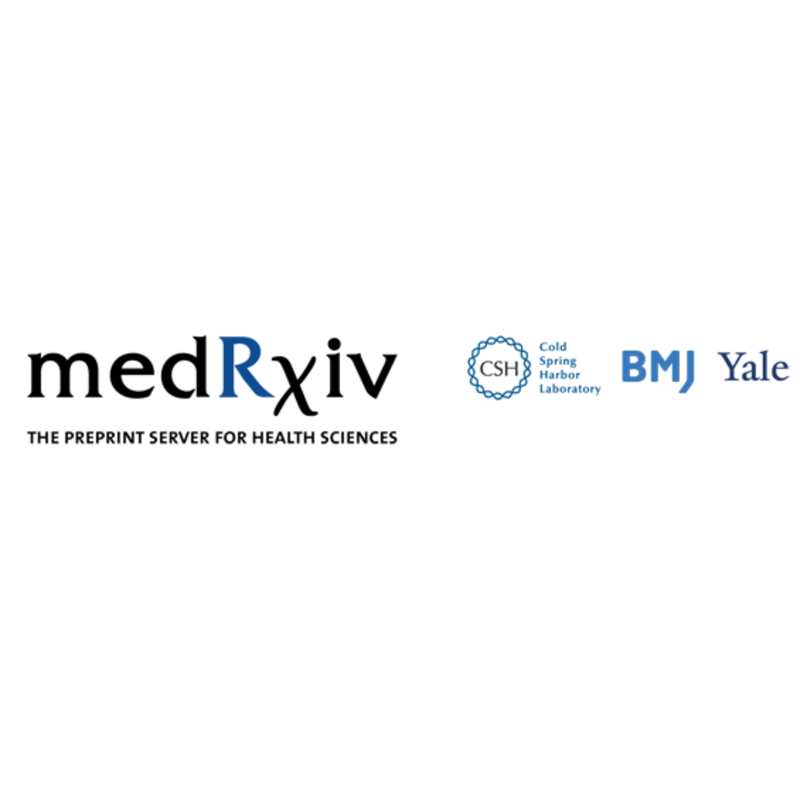
Associations of DMT therapies with COVID-19 severity in multiple sclerosis.
Simpson-Yap S, De Brouwer E, Kalincik T, et al. Associations of Disease-Modifying Therapies With COVID-19 Severity in Multiple Sclerosis. Neurology. Oct 05 2021;doi:10.1212/WNL.0000000000012753
Abstract:
Background: People with multiple sclerosis (MS) are a vulnerable group for severe COVID-19, particularly those taking immunosuppressive disease-modifying therapies (DMTs). We examined the characteristics of COVID-19 severity in an international sample of people with MS.
Methods: Data from 12 data-sources in 28 countries were aggregated. Demographic and clinical covariates were queried, alongside COVID-19 clinical severity outcomes, hospitalisation, admission to ICU, requiring artificial ventilation, and death. Characteristics of outcomes were assessed in patients with suspected/confirmed COVID-19 using multilevel mixed-effects logistic regression.
Results: 657 (28.1%) with suspected and 1,683 (61.9%) with confirmed COVID-19 were analysed. Older age, progressive MS-phenotype, and higher disability were associated with worse COVID-19 outcomes. Compared to dimethyl fumarate, ocrelizumab and rituximab were associated with hospitalisation (aOR=1.56,95%CI=1.01-2.41; aOR=2.43,95%CI=1.48-4.02) and ICU admission (aOR=2.30,95%CI=0.98-5.39; aOR=3.93,95%CI=1.56-9.89), though only rituximab was associated with higher risk of artificial ventilation (aOR=4.00,95%CI=1.54-10.39). Compared to pooled other DMTs, ocrelizumab and rituximab were associated with hospitalisation (aOR=1.75,95%CI=1.29-2.38; aOR=2.76,95%CI=1.87-4.07) and ICU admission (aOR=2.55,95%CI=1.49-4.36; aOR=4.32,95%CI=2.27-8.23) but only rituximab with artificial ventilation (aOR=6.15,95%CI=3.09-12.27). Compared to natalizumab, ocrelizumab and rituximab were associated with hospitalisation (aOR=1.86,95%CI=1.13-3.07; aOR=2.88,95%CI=1.68-4.92) and ICU admission (aOR=2.13,95%CI=0.85-5.35; aOR=3.23,95%CI=1.17-8.91), but only rituximab with ventilation (aOR=5.52,95%CI=1.71-17.84). Importantly, associations persisted on restriction to confirmed COVID-19 cases. No associations were observed between DMTs and death.
Conclusions: Using the largest cohort of people with MS and COVID-19 available, we demonstrated consistent associations of rituximab with increased risk of hospitalisation, ICU admission, and requiring artificial ventilation, and ocrelizumab with hospitalisation and ICU admission, suggesting their use may be a risk factor for more severe COVID-19.
Read Here

Multiple Sclerosis Data Alliance - A global multi-stakeholder collaboration to scale-up real world data research
Peeters LM, Parciak T, Kalra D, et al. Multiple Sclerosis Data Alliance - A global multi-stakeholder collaboration to scale-up real world data research. Mult Scler Relat Disord. Jan 2021;47:102634. doi:10.1016/j.msard.2020.102634
Abstract: The Multiple Sclerosis Data Alliance (MSDA), a global multi-stakeholder collaboration, is working to accelerate research insights for innovative care and treatment for people with multiple sclerosis (MS) through better use of real-world data (RWD). Despite the increasing reliance on RWD, challenges and limitations complicate the generation, collection, and use of these data. MSDA aims to tackle sociological and technical challenges arising with scaling up RWD, specifically focused on MS data. MSDA envisions a patient-centred data ecosystem in which all stakeholders contribute and use big data to co-create the innovations needed to advance timely treatment and care of people with MS.
Read Here
Treg-resistant cytotoxic CD4+ T cells dictate T helper cells in their vicinity: TH17 skewing and modulation of proliferation
Hoeks C, Vanheusden M, Peeters LM, et al. Treg-resistant cytotoxic CD4+ T cells dictate T helper cells in their vicinity: TH17 skewing and modulation of proliferation. Int J Mol Sci. May 2021; 22(11):5660.doi: 10.3390/ijms22115660
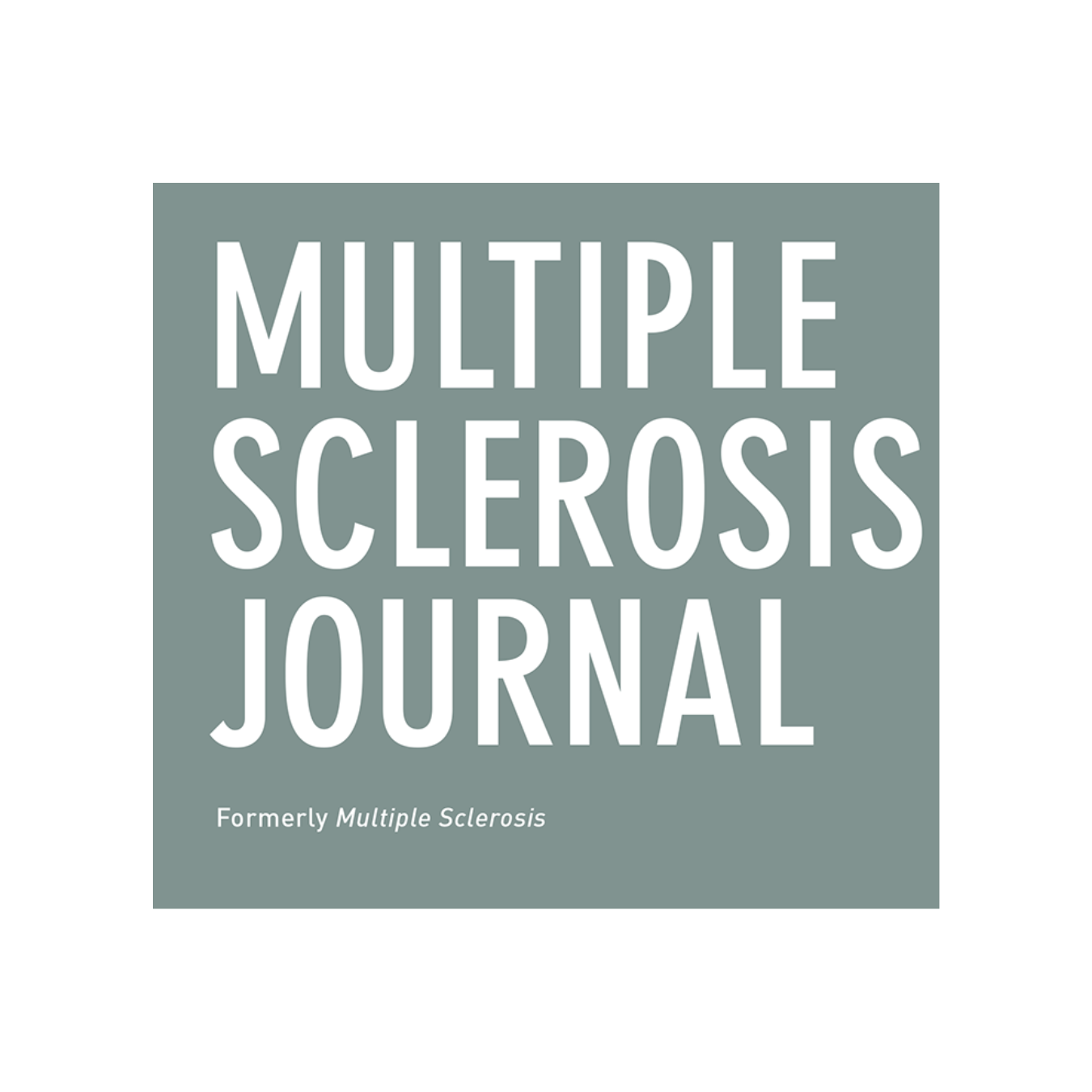
COVID-19 in people with multiple sclerosis: A global data sharing initiative
Peeters LM, Parciak T, Walton C, et al. COVID-19 in people with multiple sclerosis: A global data sharing initiative. Mult Scler. 09 2020;26(10):1157-1162. doi:10.1177/1352458520941485
Abstract
Background: We need high-quality data to assess the determinants for COVID-19 severity in people with MS (PwMS). Several studies have recently emerged but there is great benefit in aligning data collection efforts at a global scale.
Objectives: Our mission is to scale-up COVID-19 data collection efforts and provide the MS community with data-driven insights as soon as possible.

Deciphering the Morphology of Motor Evoked Potentials
Yperman J, Becker T, Valkenborg D, et al. Deciphering the Morphology of Motor Evoked Potentials. Front Neuroinform. 2020;14:28. doi:10.3389/fninf.2020.00028
Abstract:
Motor Evoked Potentials (MEPs) are used to monitor disability progression in multiple sclerosis (MS). Their morphology plays an important role in this process. Currently, however, there is no clear definition of what constitutes a normal or abnormal morphology.
To address this, five experts independently labeled the morphology (normal or abnormal) of the same set of 1,000 MEPs. The intra- and inter-rater agreement between the experts indicates they agree on the concept of morphology, but differ in their choice of threshold between normal and abnormal morphology. We subsequently performed an automated extraction of 5,943 time series features from the MEPs to identify a valid proxy for morphology, based on the provided labels. To do this, we compared the cross-validation performances of one-dimensional logistic regression models fitted to each of the features individually. We find that the approximate entropy (ApEn) feature can accurately reproduce the majority-vote labels. The performance of this feature is evaluated on an independent test set by comparing to the majority vote of the neurologists, obtaining an AUC score of 0.92. The model slightly outperforms the average neurologist at reproducing the neurologists consensus-vote labels.We can conclude that MEP morphology can be consistently defined by pooling the interpretations from multiple neurologists and that ApEn is a valid continuous score for this. Having an objective and reproducible MEP morphological abnormality score will allow researchers to include this feature in their models, without manual annotation becoming a bottleneck.
This is crucial for large-scale, multi-center datasets. An exploratory analysis on a large single-center dataset shows that ApEn is potentially clinically useful. Introducing an automated, objective, and reproducible definition of morphology could help overcome some of the barriers that are currently obstructing broad adoption of evoked potentials in daily care and patient follow-up, such as standardization of measurements between different centers, and formulating guidelines for clinical use.

Machine learning analysis of motor evoked potential time series to predict disability progression in multiple sclerosis
Yperman J, Becker T, Valkenborg D, et al. Machine learning analysis of motor evoked potential time series to predict disability progression in multiple sclerosis. BMC Neurol. Mar 2020;20(1):105. doi:10.1186/s12883-020-01672-w
Abstract: Evoked potentials (EPs) are a measure of the conductivity of the central nervous system. They are used to monitor disease progression of multiple sclerosis patients. Previous studies only extracted a few variables from the EPs, which are often further condensed into a single variable: the EP score. We perform a machine learning analysis of motor EP that uses the whole time series, instead of a few variables, to predict disability progression after two years.
Obtaining realistic performance estimates of this task has been difficult because of small data set sizes. We recently extracted a dataset of EPs from the Rehabilitation & MS Center in Overpelt, Belgium. Our data set is large enough to obtain, for the first time, a performance estimate on an independent test set containing different patients.
Publications < 2020

Multidisciplinary data infrastructures in multiple sclerosis: Why they are needed and can be done!
Peeters LM, van Munster CE, Van Wijmeersch B, et al. Multidisciplinary data infrastructures in multiple sclerosis: Why they are needed and can be done! Mult Scler. 04 2019;25(4):500-509. doi:10.1177/1352458518807076
Abstract: Personalized treatment is highly desirable in multiple sclerosis (MS). We believe that multidisciplinary measurement including clinical, functional and patient-reported outcome measures in combination with extensive patient profiling can enhance personalized treatment and rehabilitation strategies. We elaborate on four reasons behind this statement: (1) MS disease activity and progression are complex and multidimensional concepts in nature and thereby defy a one-size-fits-all description, (2) functioning, progression, treatment, and rehabilitation effects are interdependent and should be investigated together, (3) personalized healthcare is based on the dynamics of system biology and on technology that confirms a patient’s fundamental biology and (4) inclusion of patient-reported outcome measures can facilitate patient-relevant healthcare. We discuss currently available multidisciplinary MS data initiatives and introduce joint actions to further increase the overall success. With this topical review, we hope to drive the MS community to invest in expanding towards more multidisciplinary and longitudinal data collection.
Read Here
Fair data for next-generation management of multiple sclerosis
Peeters LM. Fair data for next-generation management of multiple sclerosis. Mult Scler. 08 2018;24(9):1151-1156. doi:10.1177/1352458517748475
Abstract: Multiple sclerosis (MS) is a progressive demyelinating and degenerative disease of the central nervous system with symptoms depending on the disease type and the site of lesions and is featured by heterogeneity of clinical expressions and responses to treatment strategies. An individualized clinical follow-up and multidisciplinary treatment is required. Transforming the population-based management of today into an individualized, personalized and precision-level management is a major goal in research. Indeed, a complex and unique interplay between genetic background and environmental exposure in each case likely determines clinical heterogeneity. To reach insights at the individual level, extensive amount of data are required. Many databases have been developed over the last few decades, but access to them is limited, and data are acquired in different ways and differences in definitions and indexing and software platforms preclude direct integration. Most existing (inter)national registers and IT platforms are strictly observational or focus on disease epidemiology or access to new disease modifying drugs. Here, a method to revolutionize management of MS to a personalized, individualized and precision level is outlined. The
key to achieve this next level is FAIR data.
Read Here
